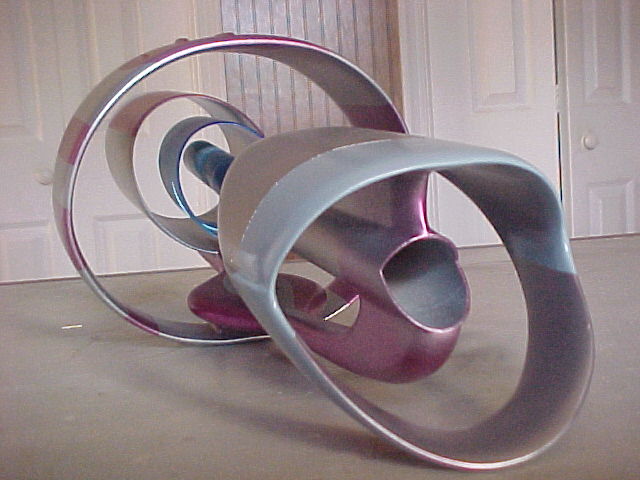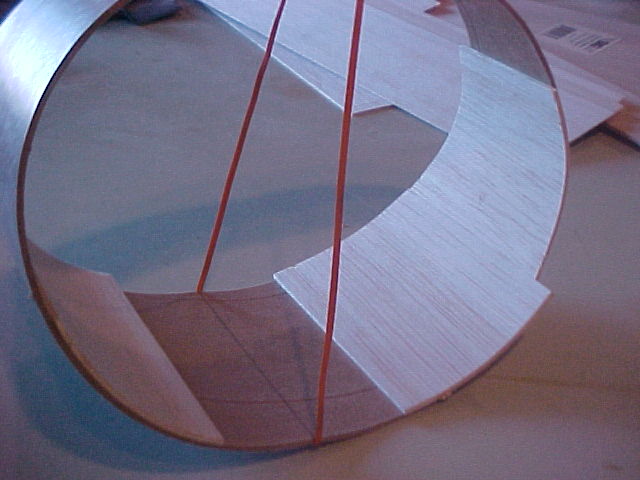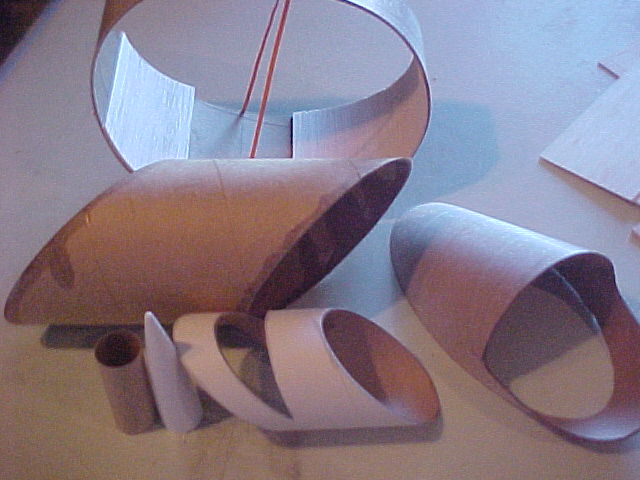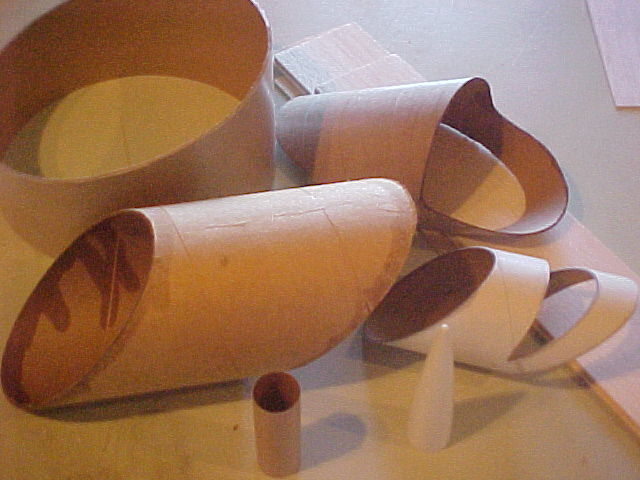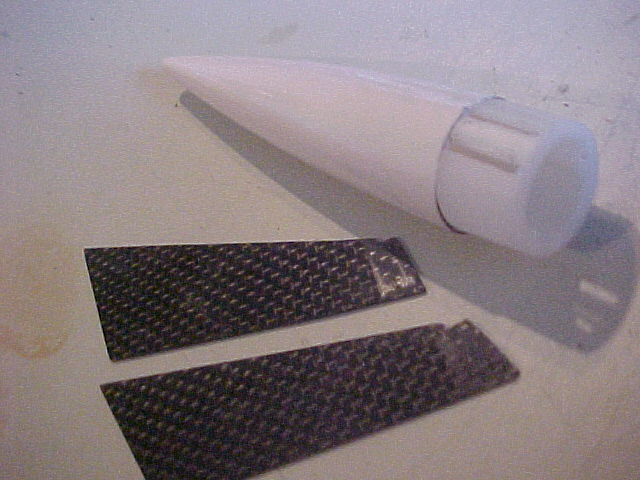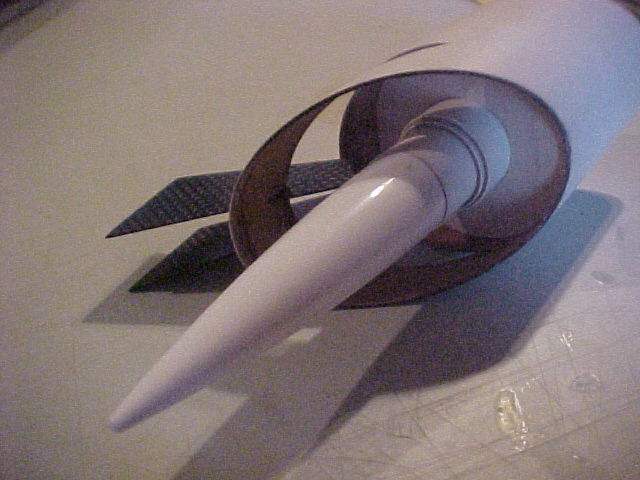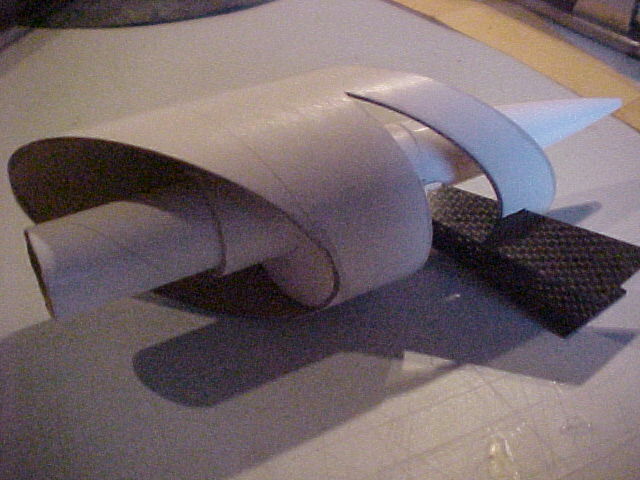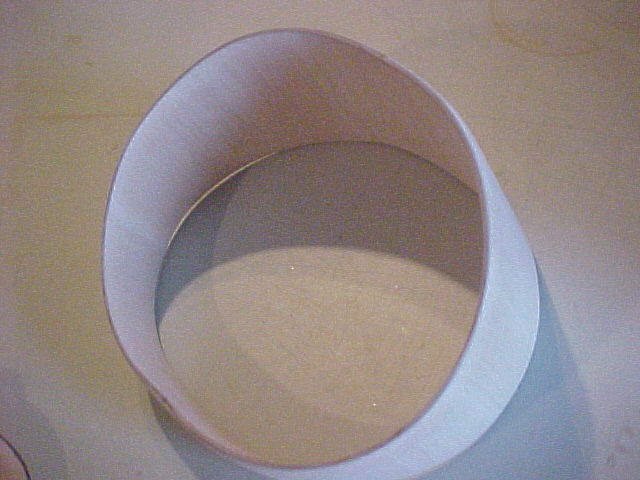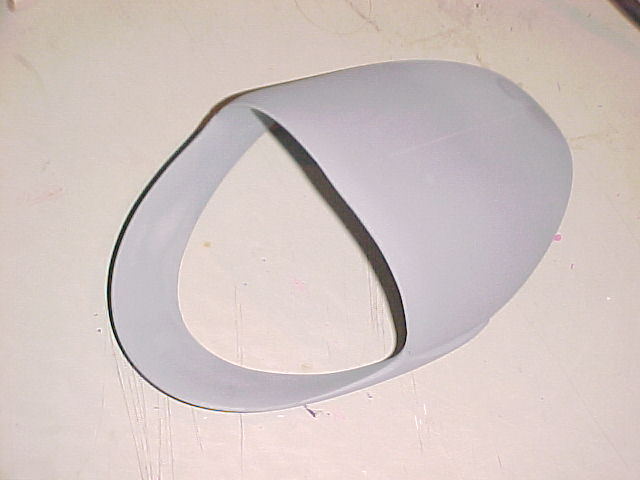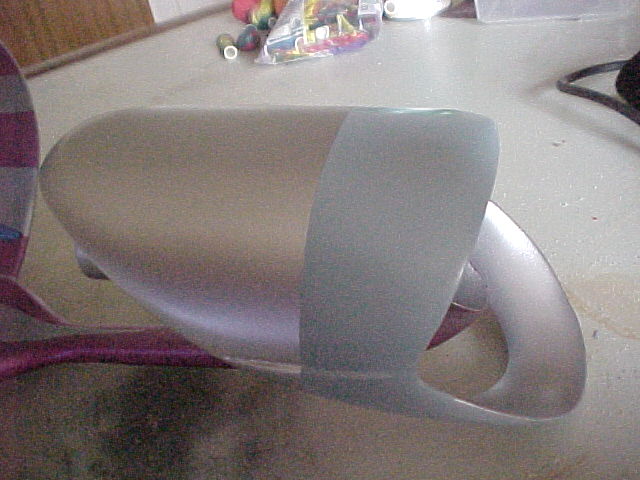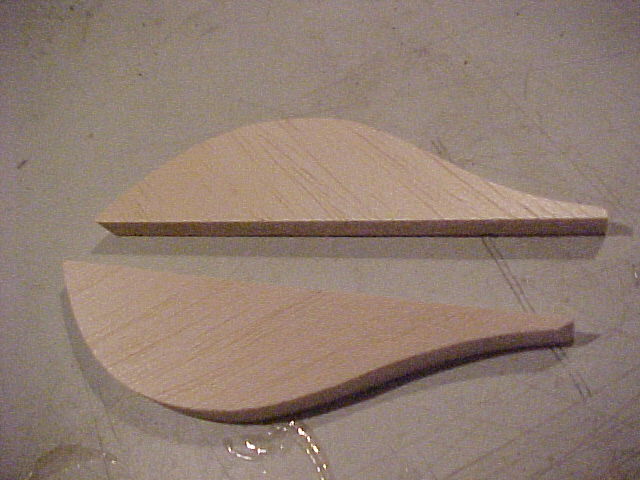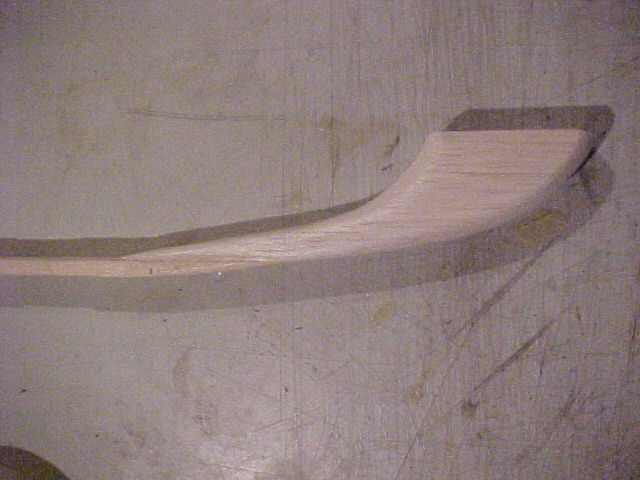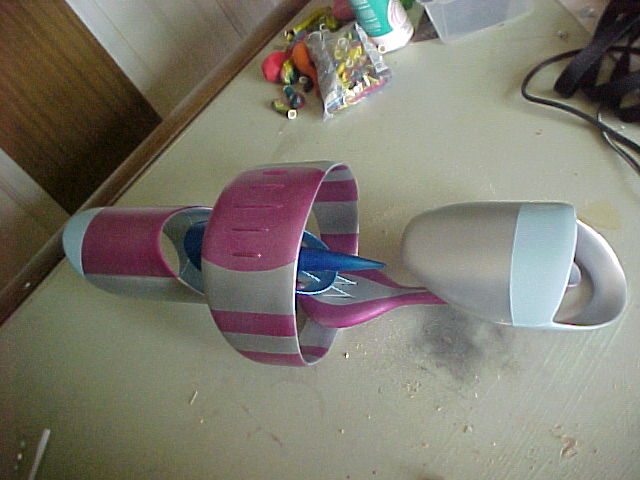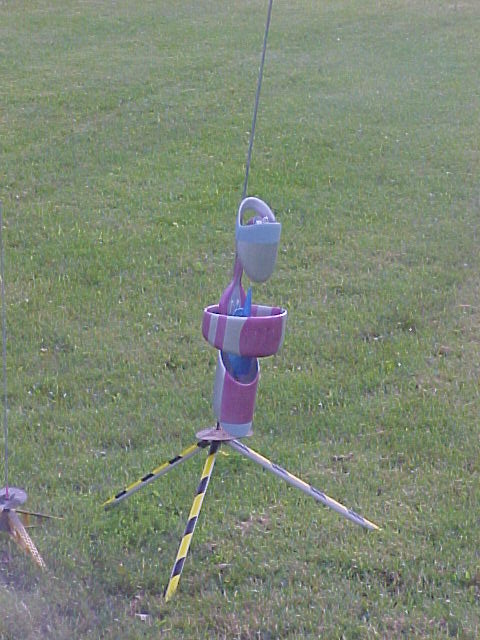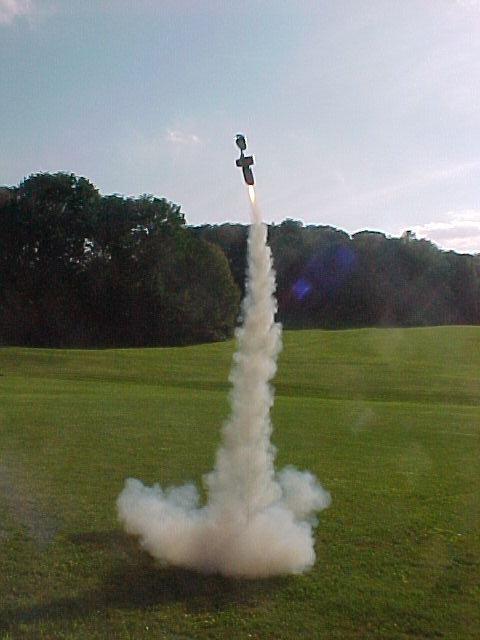Scratch Annulus Original Design / Scratch Built
Scratch - Annulus {Scratch}
Contributed by Drake "Doc" Damerau
| Manufacturer: | Scratch |
The Annulus
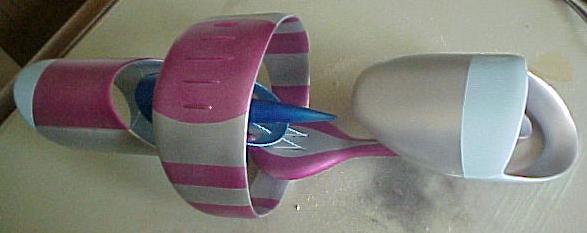
- 4” x 8” long tube for fwd section
- 7.5” 4 ¼” long tube for large middle ring
- 2.6” x 6” long tube for center ring
- 4” x 10” long tube for aft ring
- 5 sheets 3/32 x 18” balsa
- 3 sheets 1/16 x 18” Balsa
- 4” 24mm motor tube
- 5.5” x 29mm parachute tube
- 29mm OD x 2” tube for the altimeter
- Pico Alt AD-4
- 2 - N’ Cell battery holders & batteries
- Small on/off switch
- Nose cone
- 1/6” x 1.5” x 6” CF for engine mount and supports for ring
- All those scraps you have been saving
- ¼” x ¾” x 16” long balsa “stick”
- 1/4” x 3” x 12” balsa for spoon
- 6” 29mm tube for chute compartment
- 30” plastic or Mylar chute
- 24” elastic shock cord
- Finished weight (without a chute) 14.4 oz
- Spoon and Backbone Template
- Stick Drawing
Note that the lengths of tubes are what you need to build the rocket and NOT the length you need because you WILL screw it up. Believe me. I went through tons before I got it right!
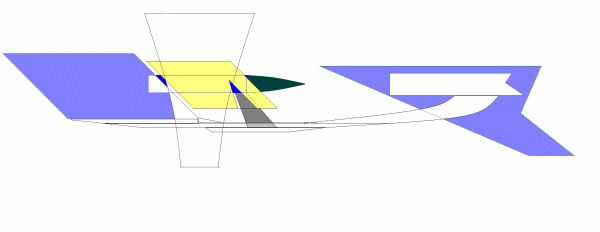
Click on ANY picture to Enlarge
This was undoubtedly the most difficult build I have ever done. Building rockets for N motors is nothing compared to this. The problems came from several fronts. The first was designing a rocket that can’t possibly exist using physics, as we know it. Rings just don’t float around spaceships. To overcome this issue, I decided that there must be supports you cant see in the view we have. Thus, the "stick" was engineered. This is the central support structure for the entire rocket. The next obstacle was making the tubes and rings to resemble what is shown. This was a tough modeling task. The biggest problem with scaling this design was the motor. To keep it scale I would have had to use a 10mm motor. High-order calculations and intense research suggested that a 10mm motor might not have launched this rocket to a respectable altitude. Finally, the last obstacle was making it fly without adding a set of fins behind it. I wanted it to resemble what is seen in the picture and nothing more.
You need to make a decision before you begin. I’m sure it’s quite feasible to build this without "ovaling" the tubes, but I chose to do this as it more accurately represented the overall look of the craft.
If you find what appears to be missing dimensions or build steps in this text. Look for a drawing for the dimensions. There are also a lot of pictures for this build. A picture is worth a thousand words and believe me, it’s the truth here.
Tubes
The pattern for the largest tube was made by folding a large sheet of paper into four. This one does not have ant straight angles, so you are already needing to tax your creativity here. I used a miter saw to cut the other tubes.
Draw lines on ID and OD of tube. Use your template to help you do this. Squish the tube a bit. Go ahead and let it crease. Creases are ok because you will be covering them up with balsa.
You’ll need to tie down the main center tube now if you are going with the oval route.
Start on the inside. Place sheets of 3/32 balsa inside. Don’t start on the top or sides. Start by centering a piece in the middle and drawing lines on the ID.
Spread glue thin. Hold until you know its dry. All this does three things; it reinforces the tube, makes it hold its shape, and gives it thickness to sand later.
The pictures show what you’ll need to help you build this section.
Aft Tube
Both the front and back of the aft tube was cut at 45 angles. This is the easy one so you may start here with miter saw tube cutting.
Small Center Tube
The small center tube was also cut at 45 angles. This one is tricky because you have to keep the planes the same. The center cutout was done at 45 and 90. This part is tricky because the kerf of the saw blade needs to come together and then trimmed with an E-Xacto blade.
Glue the two carbon fiber standoffs to this tube and the motor mount tube. I used centering rings as a jig to hold everything in place while I did this. The pictures show what you’ll need to do to build this section.
I chose to paint this section before it was assembled into the rocket because of its complexity and difficulty to paint. I covered the areas where it would be glued with masking tape so I would have a strong bond later. Once the paint was dry, I roughed up the glue area of the standoffs with 80 grit, again, for a better bond.
Forward tube
The forward most tube was the hardest tube to make of all. The long cut is 30 degrees, top front is 110 degrees and the bottom front is 145 degrees. The pictures show what you’ll need to do to build this section.
Spoon and stick
There’s probably several ways to make this section, (believe me I tried several). But this is the most critical part because it transfers the load through the entire rocket. I tried carbon fiber tubes and craftily bent brass tubing but the way I chose to make it is by laminating the structure from several alternating layers of balsa. As long as you keep the thrust / weight ratio low, this method will hold together just fine.
You’ll need to study the drawings and the pictures to get through this part.
The forward ejection tube mount was made with a solid piece of ¾" aircraft ply. This was used only because I wanted to add nose weight. Use tube with sand paper to make cradle for ejection thing.
Assembling the pieces
Since there are so many nooks and carneys, I chose to sand, fill and primer each piece before assembly. This made it easy to get a good finish. To assemble, just sand down the areas to be glued for a good bond, and retouch the paint afterwards.
I started the assembly by gluing the parachute tube to the forward end of the stick. I then glued on a 5" x 1" piece of ½" aircraft plywood that I contoured to fit the "look" of the design. To that, I glued the forward tube. I then glued the aft ring to the "stick". Once these two were dry, I again primed and sanded the assembly.
I added balsa pieces to the top of the large center ring to match the picture. The large ring was then glued to the "spoon" section using the two carbon fiber sheets.
CG was a big issue. Since it is all tube fin, the CG had to be extremely far forward. To achieve this goal, I added as much weight as possible to the forward end. I ended up with the GC just forward of the main center ring.
I used a Pico Alt for ejection. This is the smallest alt I could find to fit. That, along with a 30 plastic chute just barely fit into the forward tube. This is a tight fit so talcum powder on the chute is in order.
Finishing
The paint you’ll need for this build is as follows:
- Grey primer
- Duplicolor Automotive type chrome (spray can)
- Duplicoplor Clear blue anodizing
- Duplicolor Clear red
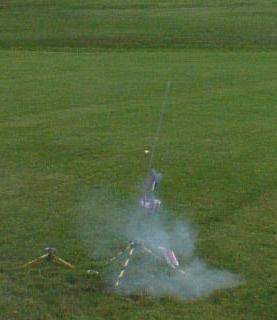 Flight
Flight
Obviously I couldn’t sim it in rocksim, so the next best thing is to at least have an idea of how high it will go. I simmed a high drag rocket with the same mass and simed my first motor selection of an E30. It showed it going to about 700’ so I decided we were go for launch. (Low and slow for the first launch.)
I took it to the field and prepped her for flight. Well the E30 CATO’d and blew it apart.
I fixed her up and gave it another try. This time I used an F21. It flew, but not like rockets do. It left the pad and gracefully arched over. By the time it was 100 feet up, it was going horizontal. It was flying! I mean with lift, like an airplane. Its orientation was "top" up, just like the artists drawing. (See the picture) It flew about 800 feet out and came back around. Once the motor burnt out, it nose dived into the ground and the chute never came out. I attribute this to the large area of the top of the large center ring; the fact that I air foiled it, and the location of the CG. To reduce the lift effect, more nose weight, or more tube fin in the back will make it fly more like a rocket and less like a plane. It will be rebuilt and more test flights are scheduled.
Sponsored Ads
 |
 |
